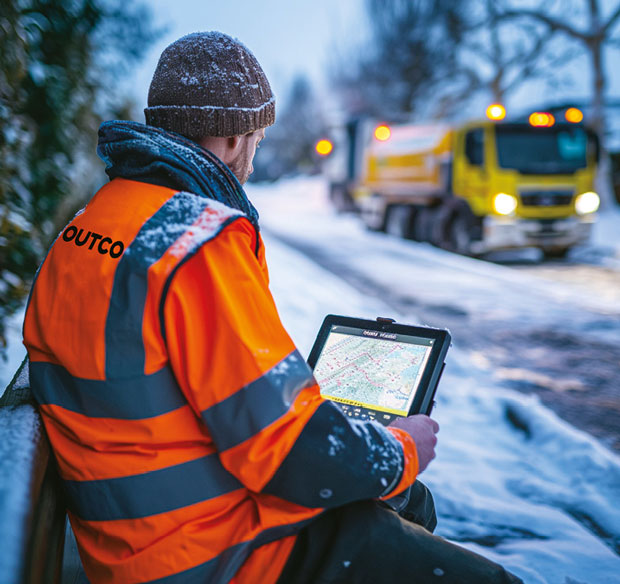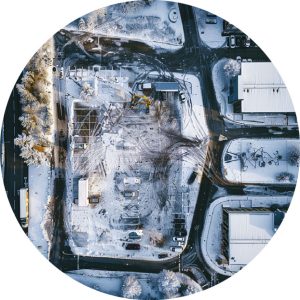BALANCING AUTOMATION WITH HUMAN INTUITION
Thus far this has been an automated, data-driven process, but today’s winter operations do still benefit from human expertise and experience.
The operations teams can review all the jobs for the evenings and have a window of a couple of hours before lunchtime in which they can change around teams or jobs as needed. This is supported by telematics software that helps to manage the teams of operators, who themselves are supported by a bespoke smartphone app – Pulse – that works on their Apple or Android devices. At around 1pm, every operator’s phone will ping to show the jobs for the night that each operator has been allocated.
Technology alone won’t get the best results: although you could optimise routes and resources to the nth degree using routing software, we allow our operators to decide how best to handle the route to allow them to respond in the moment to conditions on the ground. Clearly it makes no sense to service a site if there’s rain passing through that location that will wash away the grit, so this flexibility lets the teams judge when during the evening to schedule the visit for the safest outcomes.
By using local operators to service the same sites, operators have intricate knowledge of the site and the clients specific instructions and requirements, ensuring we get it right and provide a quality service every time. For example, when you’re working overnight you need to know that your operator knows how to access a site (i.e. has any keys they need) and has the detailed knowledge of whereabouts to work.
This is where it’s important to stress that technology and human experience aren’t in tension but reinforce each other. For example, should there be any doubt as to where exactly to grit, the boundaries of a site will have been accurately geofenced in advance so things won’t get confused even when it’s dark and snowy. Upon arrival at a site, OUTCO’s automated validation system kicks in, ensuring that the operator is in the correct location before allowing the gritting process to take place. GPS locators pinpoint the operator to the specific location where gritting is required, removing any guesswork.
The app will also give operators access to all of the risk assessment information, the service plan and any special instructions for that site. Operatives are also kept safer on the job as the real-time connection between the Pulse app and the Nimbus CRM system will allow us to know where people are working and that they are safe and on the right site.
On the flip side of the coin, Nimbus can also pass that feed in real-time to clients via a client app or portal. Had John worried about the conditions the night before, he could have logged in to see that the gritting truck was enroute.
This feed of data shows exactly where grit has been laid on site and also lets everyone validate that the service has been delivered – an essential breadcrumb trail of evidence for reporting and compliance purposes.
The mobile apps also allows operators to report any new risks or issues. Let’s say an air conditioner is leaking and leaving a trail of water that might create an increased slipping hazard – that can be captured in real-time so the client can be made aware.
This series of process and integrated technologies helps with the immense amount of heavy lifting required to service thousands of sites in poor conditions under time pressure. Without this, the added burdens of human effort, communication, time and cost would be significant.
And the result? John parks up, zips up his jacket against the cold as he strides across the expanse of tarmac. Without a thought for the night’s activity, he watches as the lorries pull up to the loading docks and it’s business as usual without any winter related interruptions.






